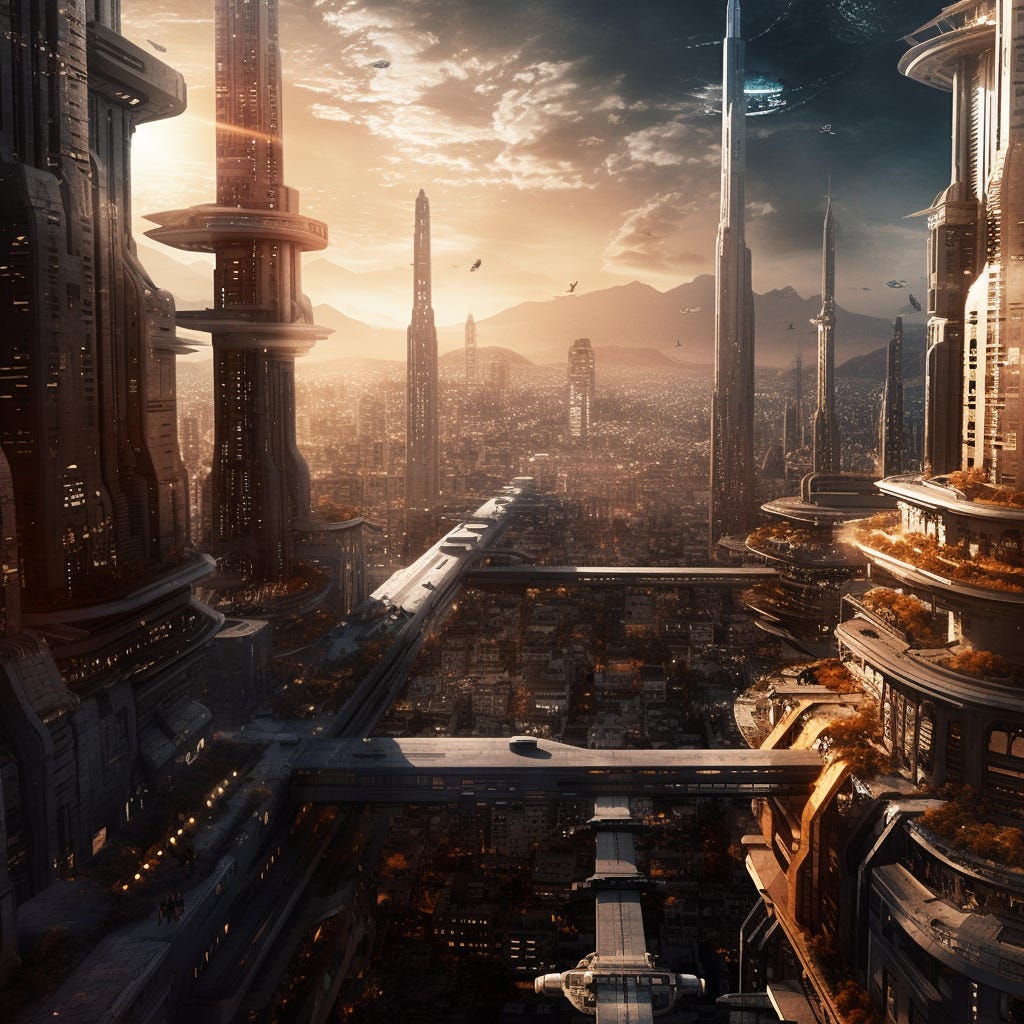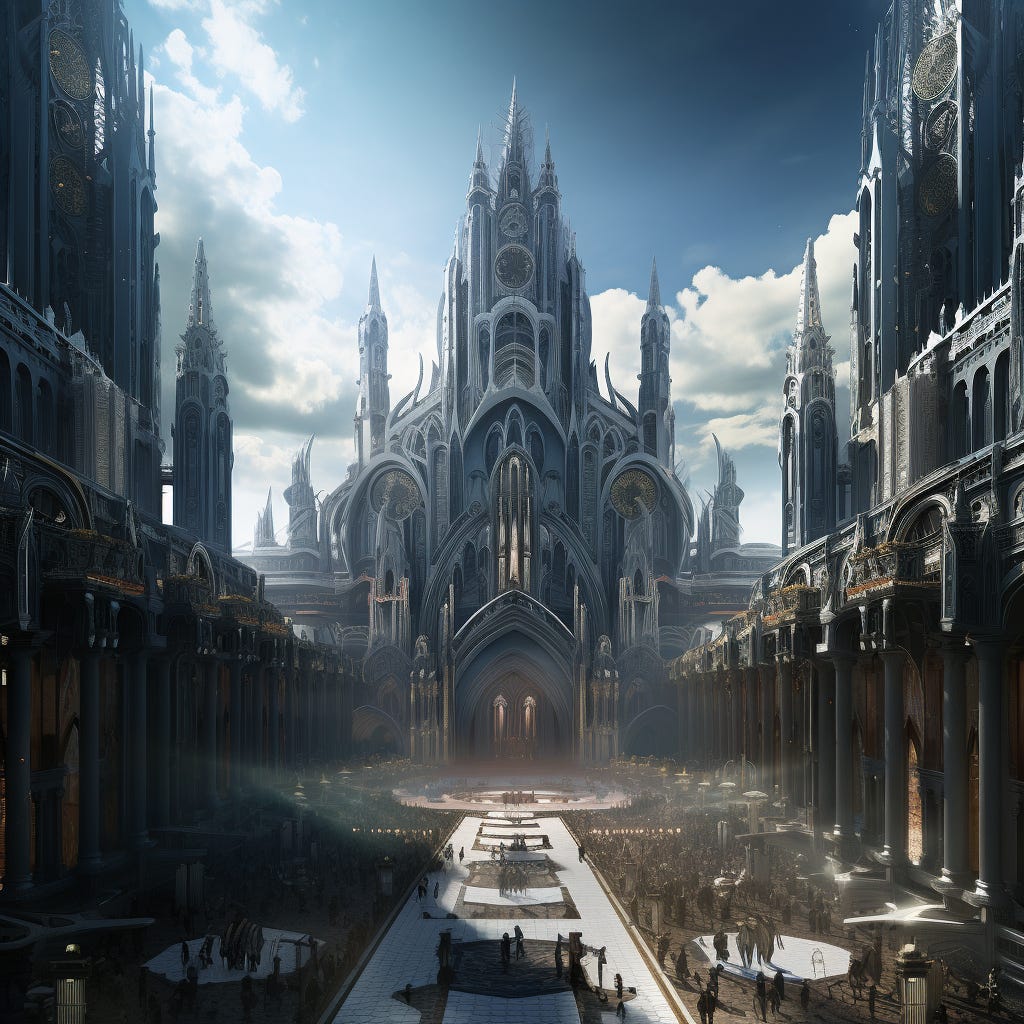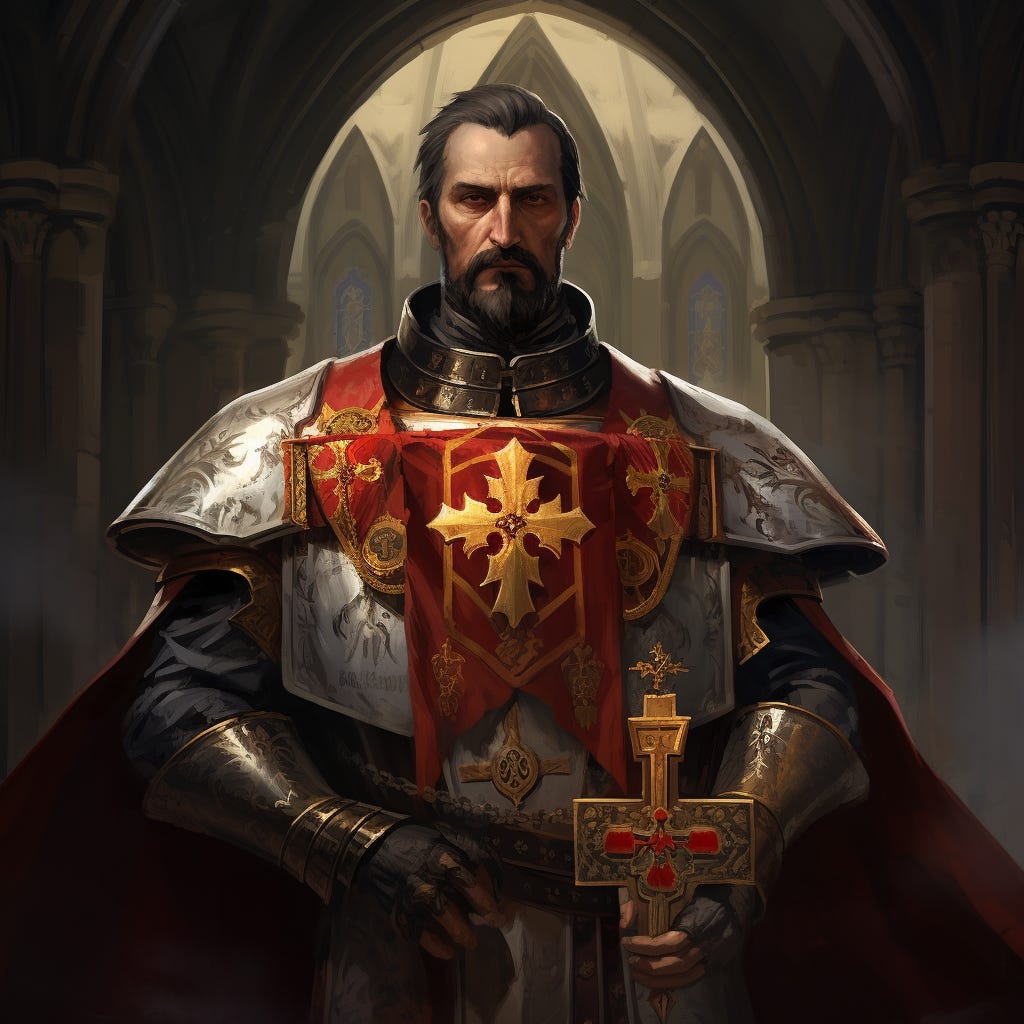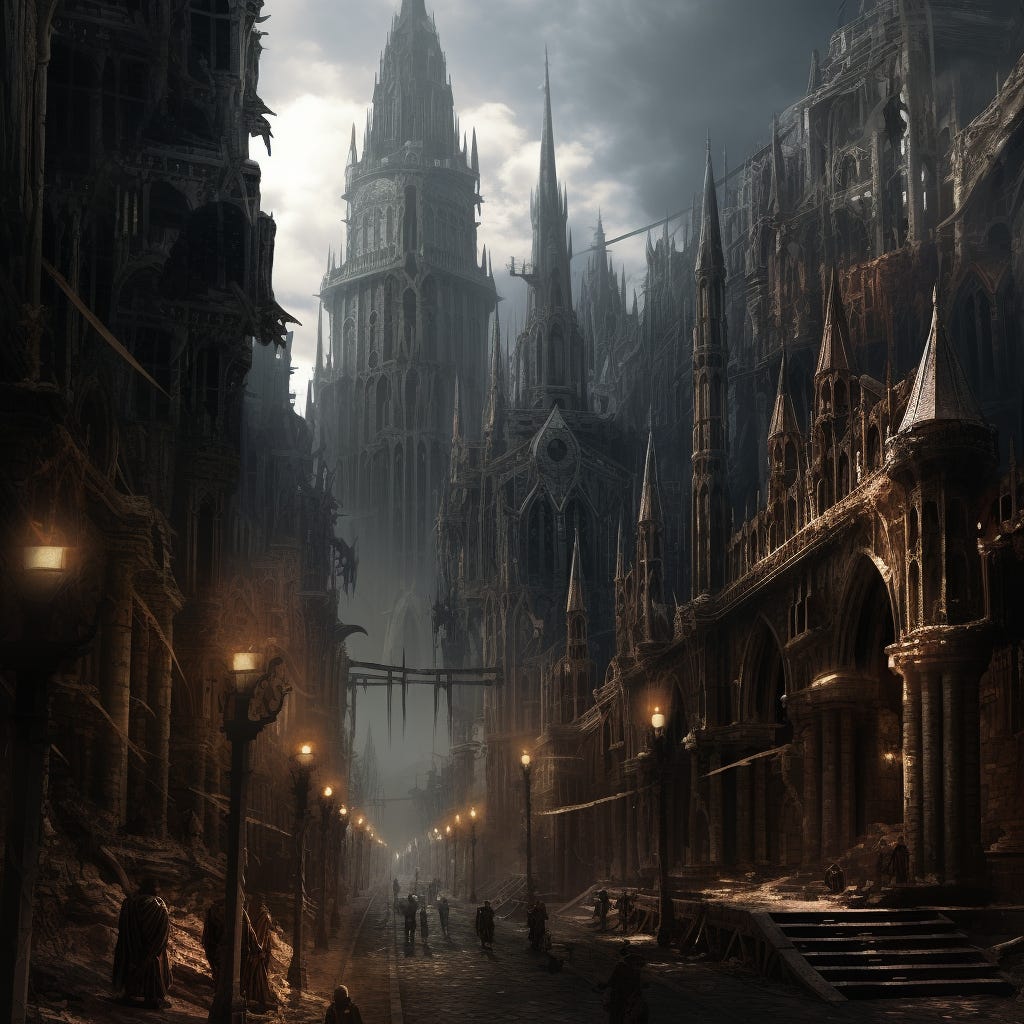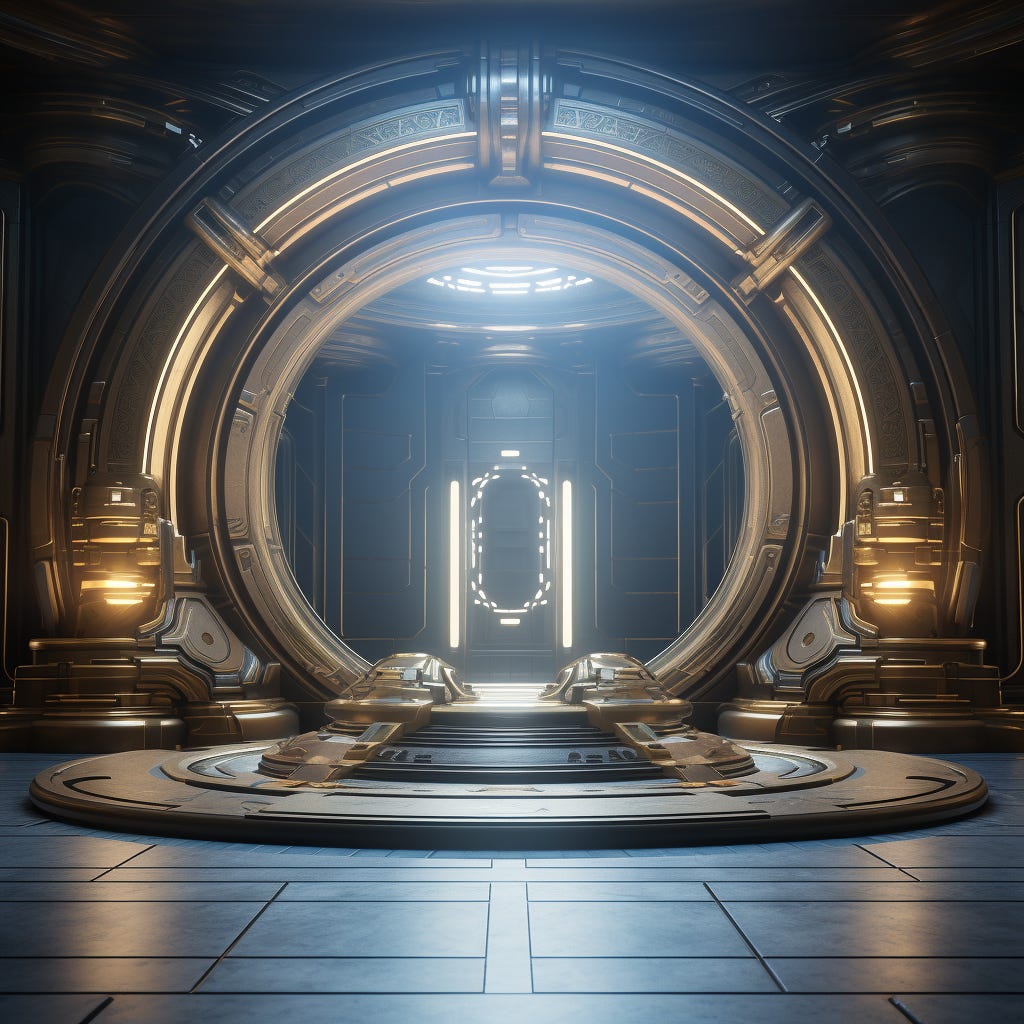Author’s Note: Greetings! For the next three weeks, I’ll be working on promoting my novel, Inquisitor’s Promise (which had been released both as a proper book and a web novel serial in Substack) through a series of posts. For this week, I want to focus on the novel’s backstory.
Nota Bene: All images are generated with Midjourney.
The Dark Reign of the Federation
During the Dark Age of Technology, the Federation ruled supreme over the Earth, the Electropshere – a realm of electricity between the Earth and the Moon where inhabitable planets were found – and much of known space. Also known as the Dark Age Civilization, the Federation had terraformed the Earth into an ecumenopolis. Much of this ‘city world’ was found underground, in the ‘undercities’. On the surface, the terrain were still varied, though cityscapes still dominated the land. Furthermore, the multitudes of ‘hive cities’ – gigantic superstructures reaching into the sky – served as a reminder of the Federation’s grand engineering project. From this point on, Earth was able to sustain quintillions of souls.
But the Dark Age Civilization was brutal and had little regard for human life. Billions, if not trillions, of lives perished daily thanks to their practices which include eugenics, abortion, and many others. They also engaged in genetic engineering and tampered with the human body; it was from them that much of the “races” of humanity came from.
The Federation was also paranoid, always eager to crush any dissent or other threats to their rule.
Despite their best efforts, the Dark Age of Technology came to an end in 50th Century, about 13 centuries after the Federation’s rise. The system that kept the Dark Age Civilization intact overloaded and went inactive for three days, creating the event known as the Three Days of Darkness. Quintillions of people perished in this event, leaving Earth severely underpopulated.
In just three days, the Federation was decapitated, and civilization fell apart. In its ashes, the Church – having remained underground for all this time – rose as a force to restore civilization. But this process was neither short nor easy. Thus, the Age of Chaos followed.
After the Dark Age
The Church’s work to rebuild civilization took about 1000 years. Slowly, the now emptied Terran ecumenopolis was being repopulated. More importantly, missionaries were able to spread the Gospel all over Earth to the scattered remnants of humanity. However, the Church had many enemies. Many Saints and Heroes were raised to face these challenges.
The Age of Chaos finally ended at the Battle of Lepanto Pass. There, the Christian Army was able to defeat the Forces of the Dragon Emperor. Once looked ready to consume all Christendom, the Cathayan Empire collapsed virtually overnight with the death of its Emperor. Thus, the Church was as good as the supreme power of Earth. To wield this newfound temporal power, the Church established two institutions: the Holy League and the Inquisition.
The Holy League
The ruling mechanism of Christendom at large, the Holy League was the successor to the Christian United Front (CUF), a coalition of Christian nations banding together against a common foe. In contrast to the CUF, the Holy League seek to get all nations to be on the same page during peacetime, creating a realm where nations coexist in peace under the watchful eye of the Church.
There were two arms of the Holy League: the Church and the State. The Church represented by the Pope in Roma in the Europa Region; the State represented by the Emperor in Texarkana in the Amerigo Region. And so, Church and State worked hand-in-hand in harmony at the highest level and served as an example to follow for those in the lower levels.
But despite this ideal, the reality tend to be messier. Nations continue to vie with one another, and even with the Church herself. In order to maintain the social order, the Church formed the Inquisitorial Order.
The Inquisition
To put it shortly, Inquisitors were agents of the Holy See. In the ancient times, Inquisitors were priests who were charged by their superiors to maintain doctrinal orthodoxy. While such an office still remained in the Church, Inquisitors in the Holy League Era were much different than their ancient counterparts.
Firstly, they were laypeople rather than religious. Because of this, the position of Inquisitors tend to be passed down from father to son. Many noble families throughout the Holy League were known for their Inquisitors, this also ensured their loyalty and that of their nations to the Church.
Furthermore, Inquisitors were charged with the continual unity of the Holy League. The threats they dealt with tend to be physical rather than doctrinal. Their special duties meant that they acted as a bridge between the laity and the hierarchy.
The Holy League Era
This new age, termed as the Holy League Era, was where the Church was at its strongest in temporal terms. Christendom spread not just throughout Earth but also beyond as the portals to the Electrosphere were rediscovered.
But like with the Age of Chaos, the Holy League Era had its challenges. In fact, there had been times where the Church’s social order looked ready to collapse. But these crises had been averted time and time again; the biggest one was the Vampiric Revolutions of 7001 when vampiric heretics conspired with the enemies of the Church to launch revolutions all over Christendom and was able to set the Imperium and the Papacy at each other’s throats.
But the challenges kept on coming. In the 74th century, the Holy League was more divided than they had been since the Battle of Lepanto Pass. There were five factions in Christendom vying for dominance: the Proletarians, the Spacers, the Imperialists, the Corporatists, and the Knights. This time, it looked as if the Holy League would collapse into infighting.
Knowing that the unity of Christendom was at stake, Pope Peter Paul III was able to devise a new plan with the help of Grand Inquisitor Anchises Aquilanus: a collective project. An ancient gate had been discovered under the surface of the Moon, an artifact from the Dark Age. Getting the five faction leaders to agree to this had been a difficult task, but they each had their own interest in the enterprise.
Despite warnings from the enigmatic recordkeepers not to tamper with the ancient gate, the desperate Church went through with the project. With scientists from all over Christendom working tirelessly, both the Pope and the Grand Inquisitor were hopeful that the opening of that ancient gate may bring together the Five Factions of the Holy League together…
Want to find out what happens next? Get your copy of Inquisitor’s Promise on Amazon, Lulu, or Laterpress. Alternatively, you can read the web novel version here in Germanicus Publishing:
Thanks for reading. Don’t forget to like, subscribe, and share. Also, feel free to support my work. I appreciate every bit of support.





